
When it comes to Kagoshima, Sengan-en is famous right?
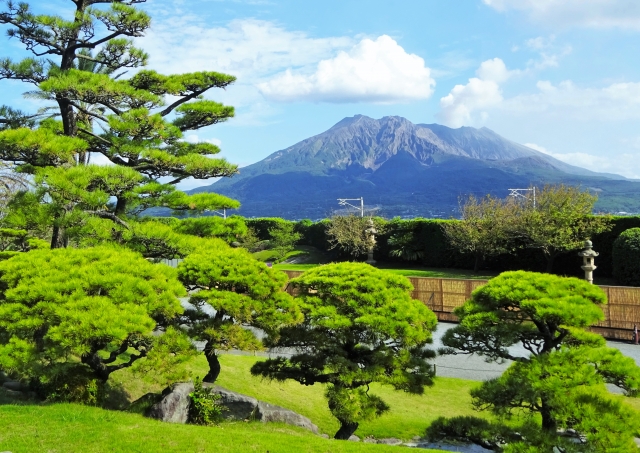

What to eat while traveling to Kagoshima?
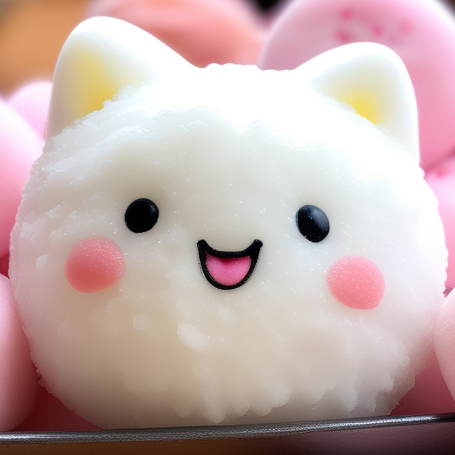
This page introduces a list of local foods (pork, street foods, seafood, sweets, fruits, seasoning, noodles, chicken, vegetables) that Japanese people want to eat when sightseeing in Kagoshima, Kyushu region.

Local foods that Japanese people want to eat?

I want you to know not only must-try foods for foreign tourists but also what Japanese people specifically want to eat when they sightsee in Kagoshima.

Some of the information may be the same and some may be different compared to information for foreign tourists. Hope you find something new.
Kurobuta pork
- Read in Japanese: Kagoshima kurobuta
- Original name: かごしま黒豚
- Category: Pork
Kagoshima Kurobuta pork is fed a diet containing sweet potatoes, a specialty of Kagoshima, which enhances its umami and sweetness. The pork is also characterized by its thin muscle fibers, making it tender. In addition, the high melting temperature of the fat makes it refreshing. Kagoshima Kurobuta pork is widely known as high quality brand pork.
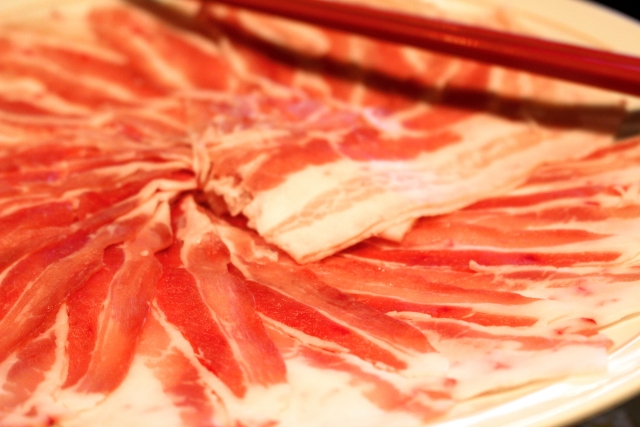
Google Map
Fried fish cake
- Read in Japanese: Satsumaage
- Original name: さつま揚げ
- Category: Street foods
Tsukeage is made by kneading fish paste with local sake, sugar, and other seasonings, forming it with carrots and burdocks, and deep frying it in rapeseed oil. In other regions, it is called satsumaage, tempura, hanpen, or agekamaboko. It is popular that it is served in school lunches and is also popular as street food.
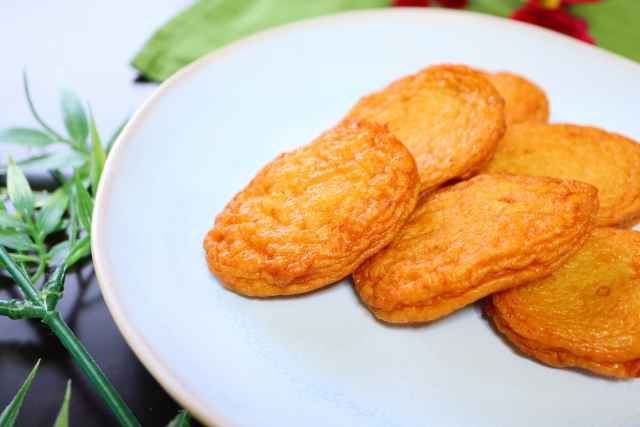
Google Map
Yellowtail
- Read in Japanese: Buri
- Original name: ブリ
- Category: Seafood
Kagoshima produces the largest amount of farm-raised yellowtail in Japan. Various brands of yellowtail (buri oh, Satsuma kurozu buri, and buri taisho) are available in various places in Kagoshima. There are various yellowtail dishes such as sashimi, buri shabu, simmered dish, and deep-fried dish.
The following figure is the example of buri shabu.

KCyamazaki, CC BY-SA 4.0, via Wikimedia Commons
Google Map
Shrimp
- Read in Japanese: Ebi
- Original name: エビ
- Category: Seafood
Kagoshima is a shrimp producing area, and many different kinds of shrimp can be tasted. In particular, hime amaebi is a sweet shrimp caught in Kinko Bay, Kagoshima, and is characterized by its strong sweet taste. It is used for kakiage (shrimp and vegetable tempura) and for satsumaage as explained above.
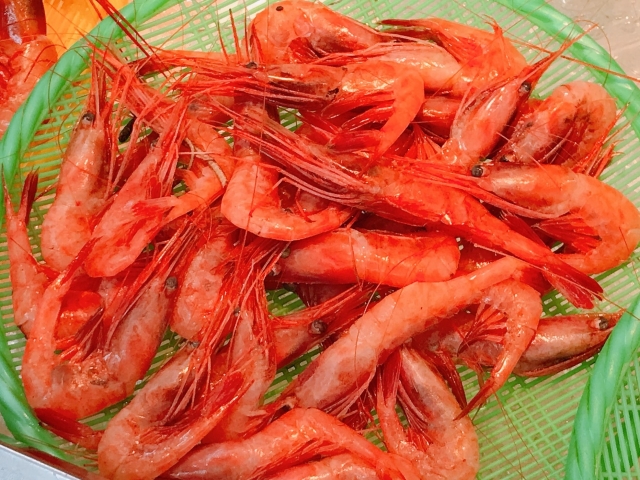
Google Map
Eel
- Read in Japanese: Unagi
- Original name: うなぎ
- Category: Seafood
Kagoshima is Japan’s largest producer of farm-raised eels. Because they are raised in high-quality water filtered by the Shirasu Plateau, they have a flavor that is not peculiar and is easily accepted by everyone.

663highland, CC BY 2.5, via Wikimedia Commons
Google Map
Marinated fresh greater amberjack bowl
- Read in Japanese: Kanpachi zuke don
- Original name: かんぱち漬け丼
- Category: Seafood
As with yellowtail, Kagoshima is Japan’s largest producer of farm-raised greater amberjack (kanpachi), with various brands of kanpachi available in different regions. The most popular dish is kanpachi zuke don, a bowl of rice topped with kanpachi marinated in a special sauce.
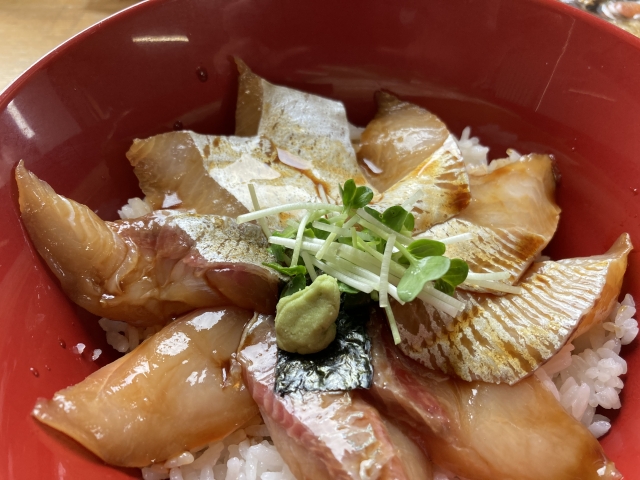
Google Map
Shirokuma
- Read in Japanese: Shirokuma
- Original name: 白熊
- Category: Sweets
Shirokuma is a dessert made by pouring condensed milk over shaved ice and topping it with fruit and other toppings. The name “Shirokuma” was established because of its resemblance to a white bear when viewed from above. It is eaten especially in the summer and is popular among both children and adults in the region.
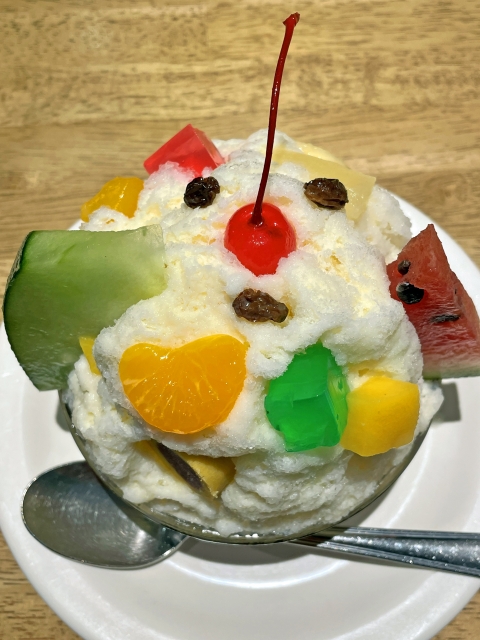
Google Map
Jambomochi
- Read in Japanese: Jambomochi
- Original name: ぢゃんぼ餅
- Category: Sweets
Jambomochi is a food made by skewering two sticks onto a rice cake, grilling it, and pouring a sweet sauce made from sugar and soy sauce over the rice cake. It is a traditional food that has been enjoyed in Kagoshima for a long time.
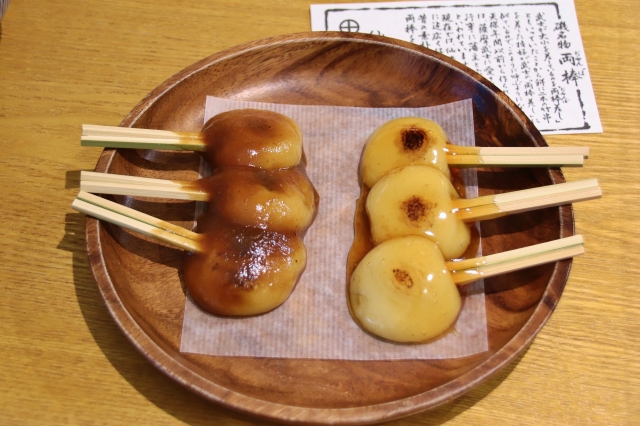
Google Map
Getanha
- Read in Japanese: Getanha
- Original name: げたんは
- Category: Sweets
Getanha is made by dipping the dough in molasses. The dough is moist, but also has the crisp texture of the molasses. It has long been a favorite food of the local people.
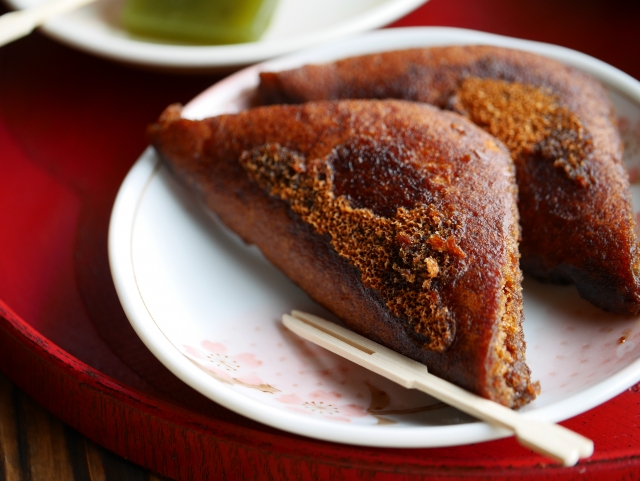
Google Map
Akumaki
- Read in Japanese: Akumaki
- Original name: あくまき
- Category: Sweets
Akumaki is glutinous rice cooked with lye and wrapped in a bamboo skin.
When eaten, the bamboo skin is peeled off and topped with soybean flour and sugar. It is famous as a unique Kagoshima rice cake sweet.
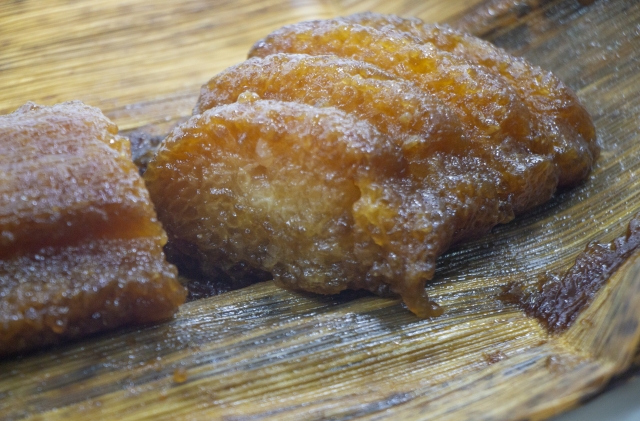
Google Map
Karukan
- Read in Japanese: Karukan
- Original name: かるかん
- Category: Sweets
Karukan is a Japanese sweet made from steamed yam. It is a traditional Kagoshima sweet with a soft, sweet aroma of yam and a hint of sweetness.

Google Map
Pomelo candy
- Read in Japanese: Bontan ame
- Original name: ボンタンアメ
- Category: Sweets
Bontan ame is a candy that is soft and glutinous, with a hint of sweet and sour Bontan flavor. It is a popular sweet for both children and adults in Kagoshima.

hashi photo, CC BY 3.0, via Wikimedia Commons
Google Map
Unshu mikan
- Read in Japanese: Unshu mikan
- Original name: 温州みかん
- Category: Fruits
Unshu mikan is characterized by its thin skin, which is easy to peel and eat, and is said to have originated in Kagoshima.
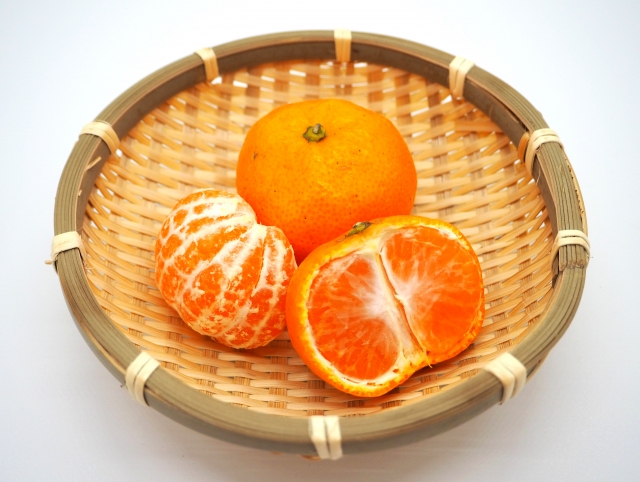
Google Map
Pork miso
- Read in Japanese: Buta miso
- Original name: 豚味噌
- Category: Seasoning
Buta miso is a traditional side dish miso made by combining pork and miso, and is eaten at home in Kagoshima or as a popular souvenir.
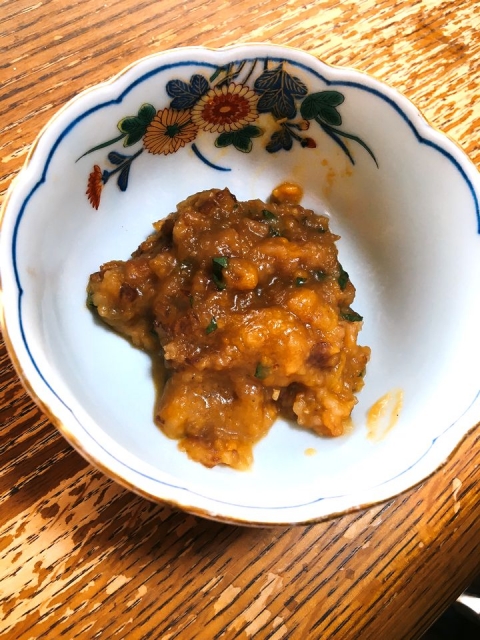
Google Map
Black vinegar
- Read in Japanese: Kurozu
- Original name: 黒酢
- Category: Seasoning
Kurozu is a type of grain vinegar said to have originated in Kagoshima and is a traditional food representative of Kagoshima.
The following figure is the example of black vinegar.
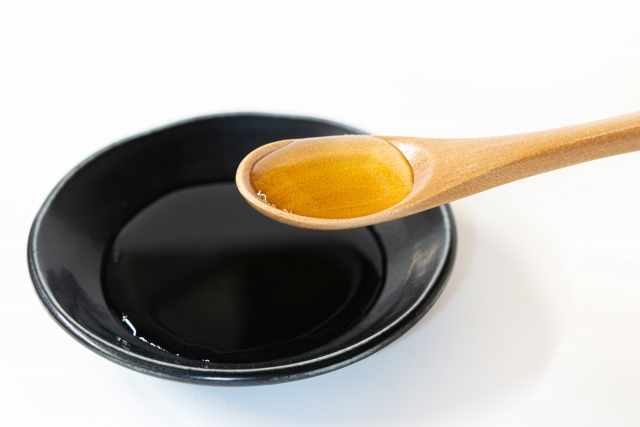
Google Map
Sweet soy sauce
- Read in Japanese: Amai shoyu
- Original name: 甘い醤油
- Category: Seasoning
Kyushu, where Kagoshima is located, is famous for its sweet soy sauce, and Kagoshima’s soy sauce is especially sweet, said to be the sweetest in Japan.
The following figure is the example of sweet soy sauce.
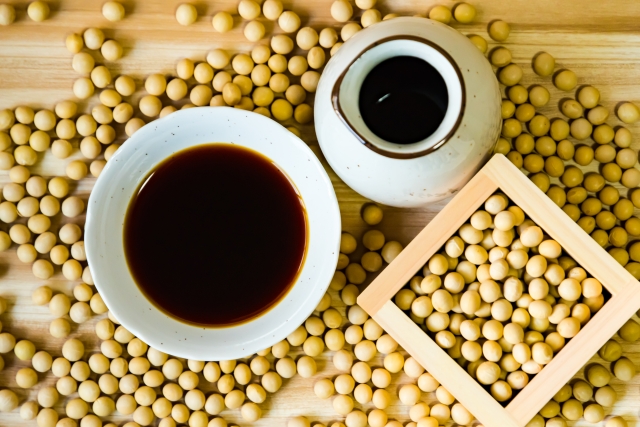
Google Map
Zabon ramen
- Read in Japanese: Zabon ramen
- Original name: ざぼんラーメン
- Category: Noodles
Zabon ramen is a light tonkotsu ramen. The name “Zabon ramen” is familiar in Kagoshima, and this ramen is suitable for everyone, from children to adults.

Nissy-KITAQ, CC BY-SA 3.0, via Wikimedia Commons
Google Map
Flowing soumen noodles
- Read in Japanese: Soumen nagashi
- Original name: そうめん流し
- Category: Noodles
Soumen nagashi is said to have originated in Kagoshima, and we can enjoy Soumen noodles flowing over their tables throughout the year.
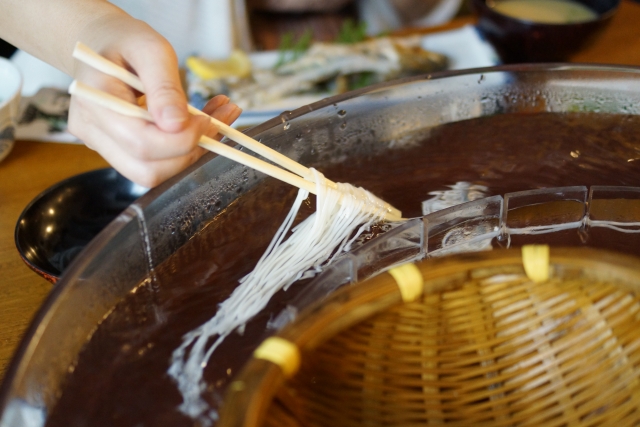
Google Map
Chicken rice
- Read in Japanese: Keihan
- Original name: 鶏飯
- Category: Chicken
Keihan is a dish similar to chazuke (rice with green tea), in which shredded chicken, dried shiitake mushrooms, a thinly sliced egg, pickled vegetables, and other ingredients are placed on top of rice and served with hot chicken broth. Keihan is also popular as a school lunch menu item.
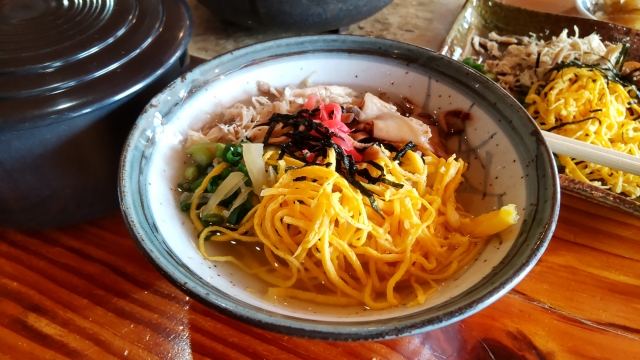
Google Map
Chicken sashimi
- Read in Japanese: Torisashi
- Original name: 鳥刺し
- Category: Chicken
Torisashi is made with sashimi-grade chicken meat, the skin of which is roasted, sliced into thin strips, served with grated garlic and ginger, and dipped in a sweet soy sauce. It is served with green perilla leaves and sliced onions. It is popular among local people that it can be purchased at supermarkets.
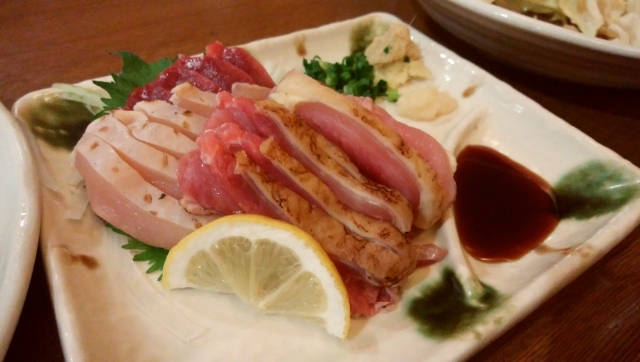
Google Map
Sweet potato tempura
- Read in Japanese: Gane
- Original name: がね
- Category: Vegetables
Kagoshima produces the largest amount of sweet potatoes in Japan. Gane is a dish made from those sweet potatoes and flour and deep fried in oil. Vegetables, chicken, and small dried fish are sometimes fried together. Gane is popular among both children and adults.
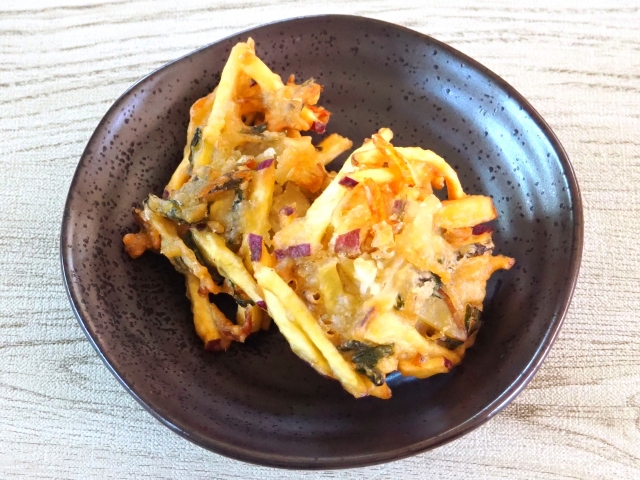
Google Map
Japanese radish
- Read in Japanese: Sakurajima daikon
- Original name: 桜島大根
- Category: Vegetables
Sakurajima daikon is a traditional Kagoshima vegetable and has been recognized by the Guinness Book of Records as the heaviest daikon in the world. It is often used in oden (Japanese fish cake stew) and buri daikon (simmered yellowtail with Japanese radish), because of its characteristics such as easy soaking up the flavor when stewed, soft but not easily falling apart while cooking, and sweetness.
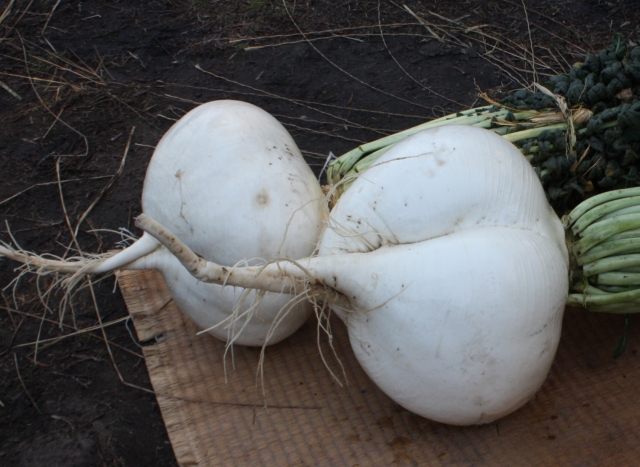
Google Map
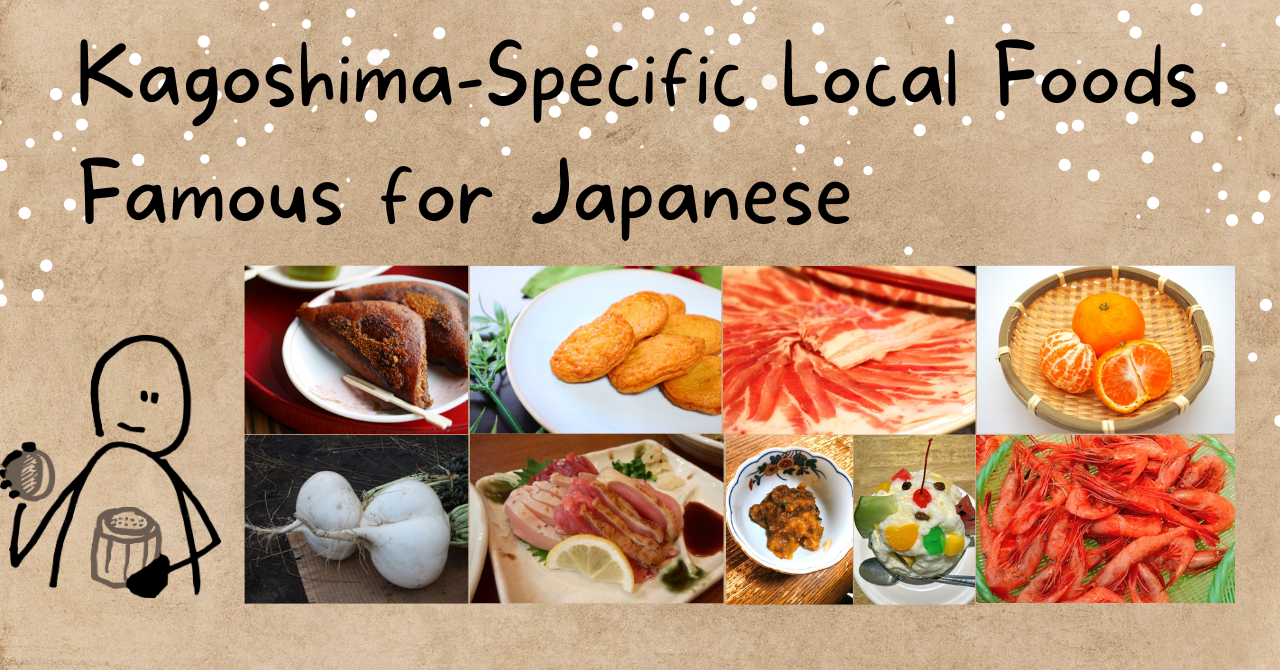


Comment